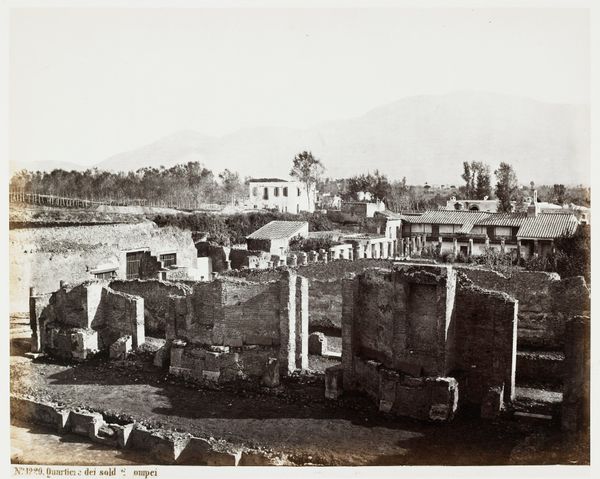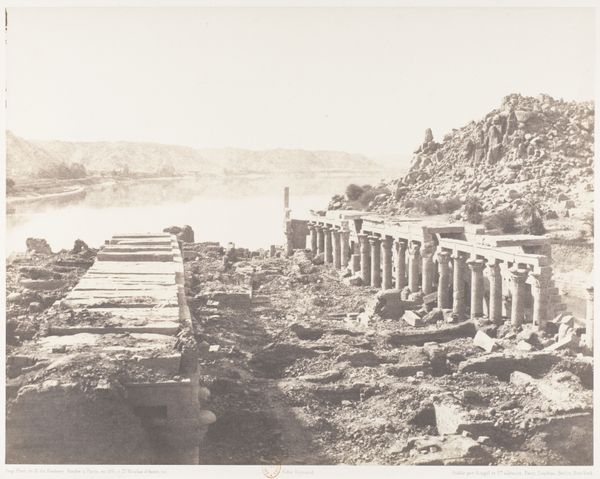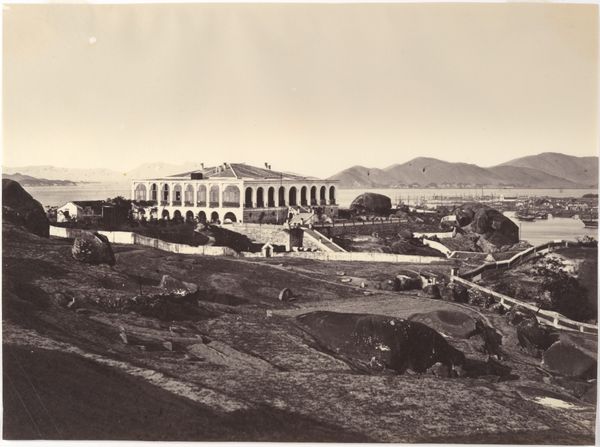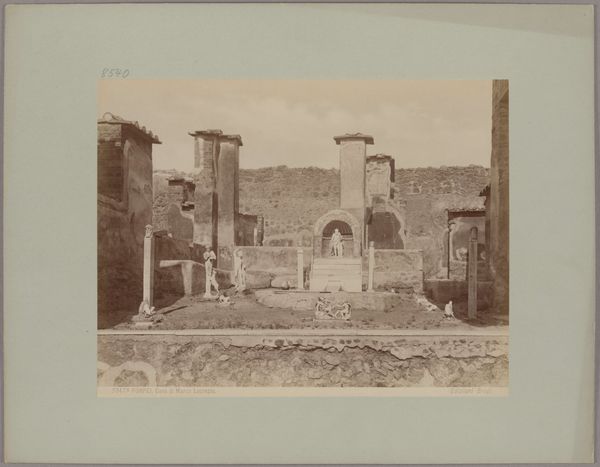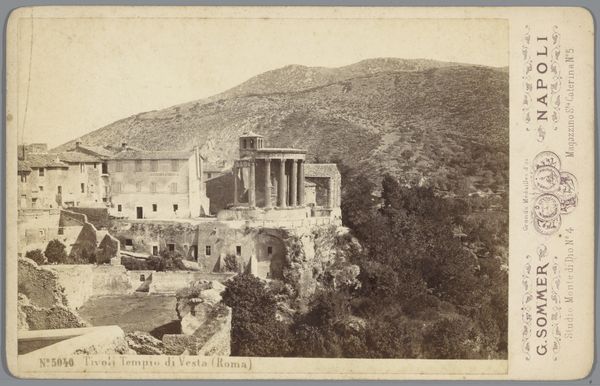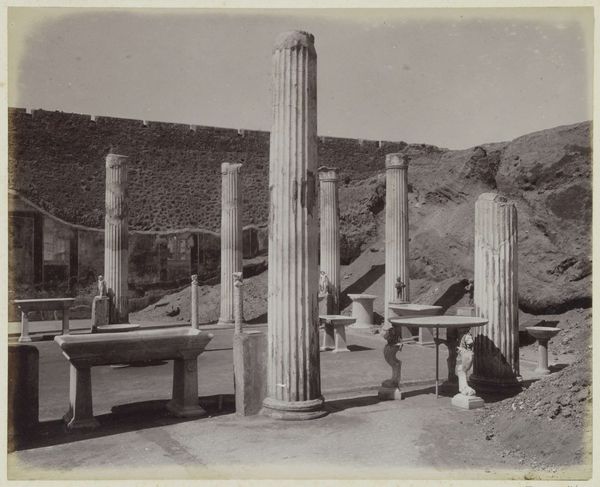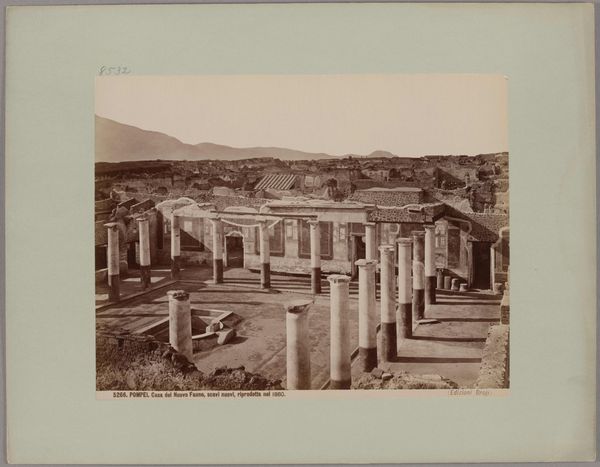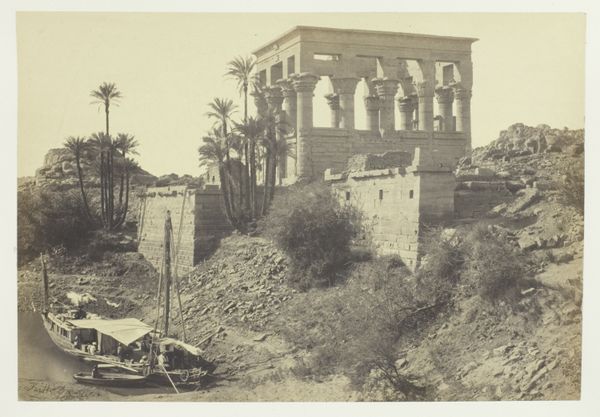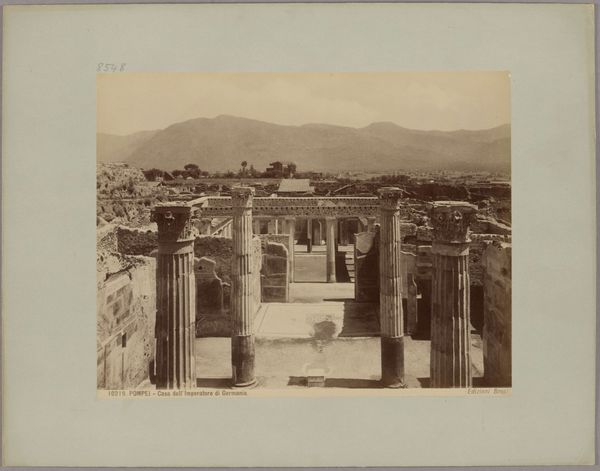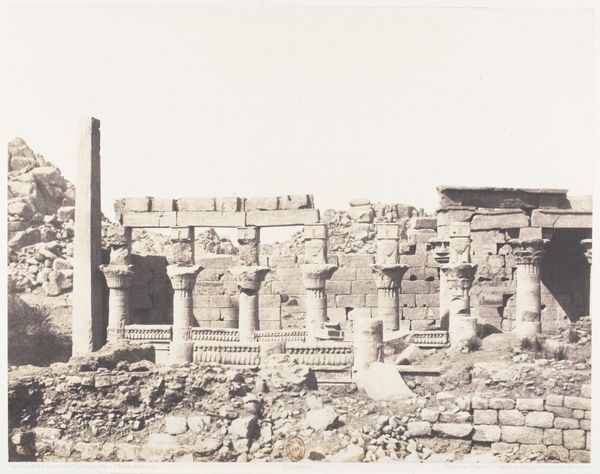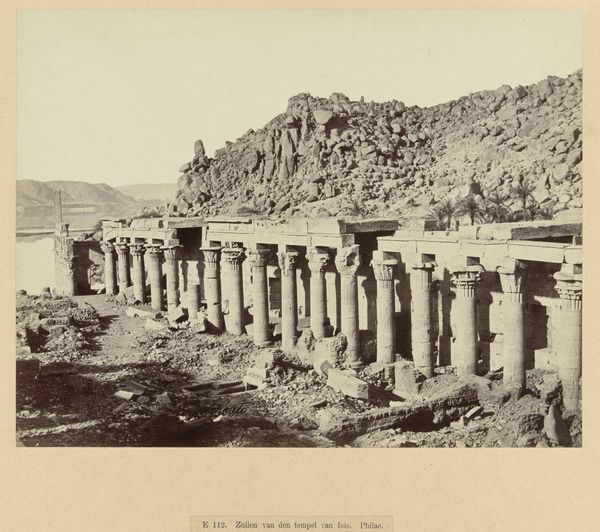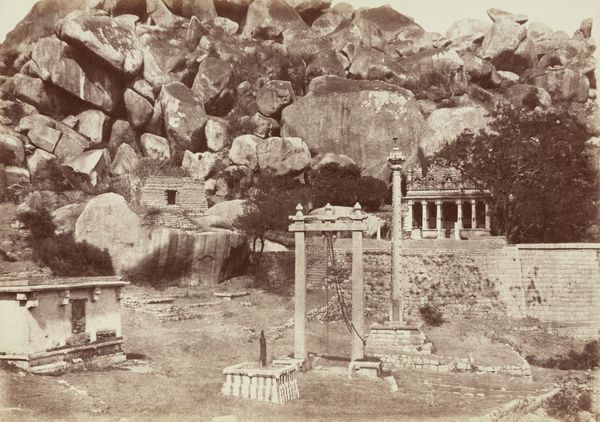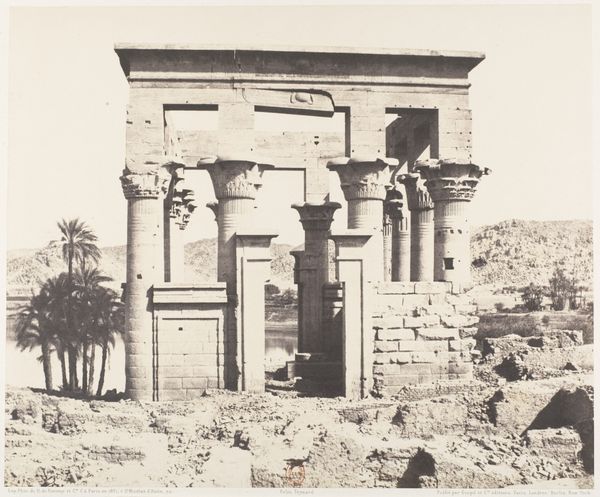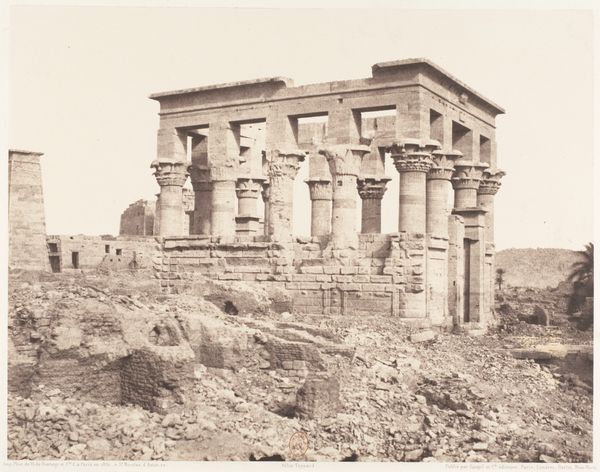
print, plein-air, photography, gelatin-silver-print, architecture
#
print photography
# print
#
plein-air
#
landscape
#
ancient-egyptian-art
#
street-photography
#
photography
#
egypt
#
ancient-mediterranean
#
gelatin-silver-print
#
19th century
#
history-painting
#
architecture
Dimensions: 15.7 × 23.4 cm (image/paper); 29.5 × 42.7 cm (album paper)
Copyright: Public Domain
Curator: Looking at Francis Frith's gelatin-silver print, "Pharoah's Bed, Philae, from the Great Temple" from 1857, one can't help but immediately feel the weight of history. The ruins dominate the foreground, stark against the soft sky. Editor: Indeed, the print captures that 19th-century obsession with documenting ancient civilizations. Note the way Frith employs the gelatin-silver process—it's instrumental in rendering the detail of the stonework. But the real question is: what motivated him to haul his equipment all the way to Philae? Curator: Well, the visual culture of the time played a significant role. There was burgeoning interest in Egypt, and photography offered a way to bring back "evidence" of these ancient cultures, thus bolstering colonial narratives and trade routes. Editor: Precisely, and the materiality of the photograph itself becomes a tool in this enterprise. Think about it, the gelatin-silver process created prints that were far more durable and reproducible. Suddenly, Egyptian monuments were not just distant sites but mass-produced objects ready for European parlors. Curator: Yet there's a tension between this mass production and the unique skill involved. Each print required precise control over the developing process, the chemicals used, the light, all things to note. It’s a complex interplay between industry and artisanal knowledge, don't you think? Editor: I concede that, but I also see how the photograph reinforces an orientalist gaze. The "ruin" becomes a symbol of a civilization's decline, conveniently ignoring the continued life of the region and turning labor of reconstruction into an object to be captured and sold. It becomes another product readily consumed in Europe, divorced from its local context. Curator: I understand your point. Considering the cultural politics embedded in Frith's photographs makes us more attentive viewers. The technology, his labor, its consumption – these prints participate in very powerful social narratives. Editor: Exactly. By focusing on the history and impact of Frith's image, we see that photographs are never neutral records, they are cultural products with far reaching consequences.
Comments
No comments
Be the first to comment and join the conversation on the ultimate creative platform.
